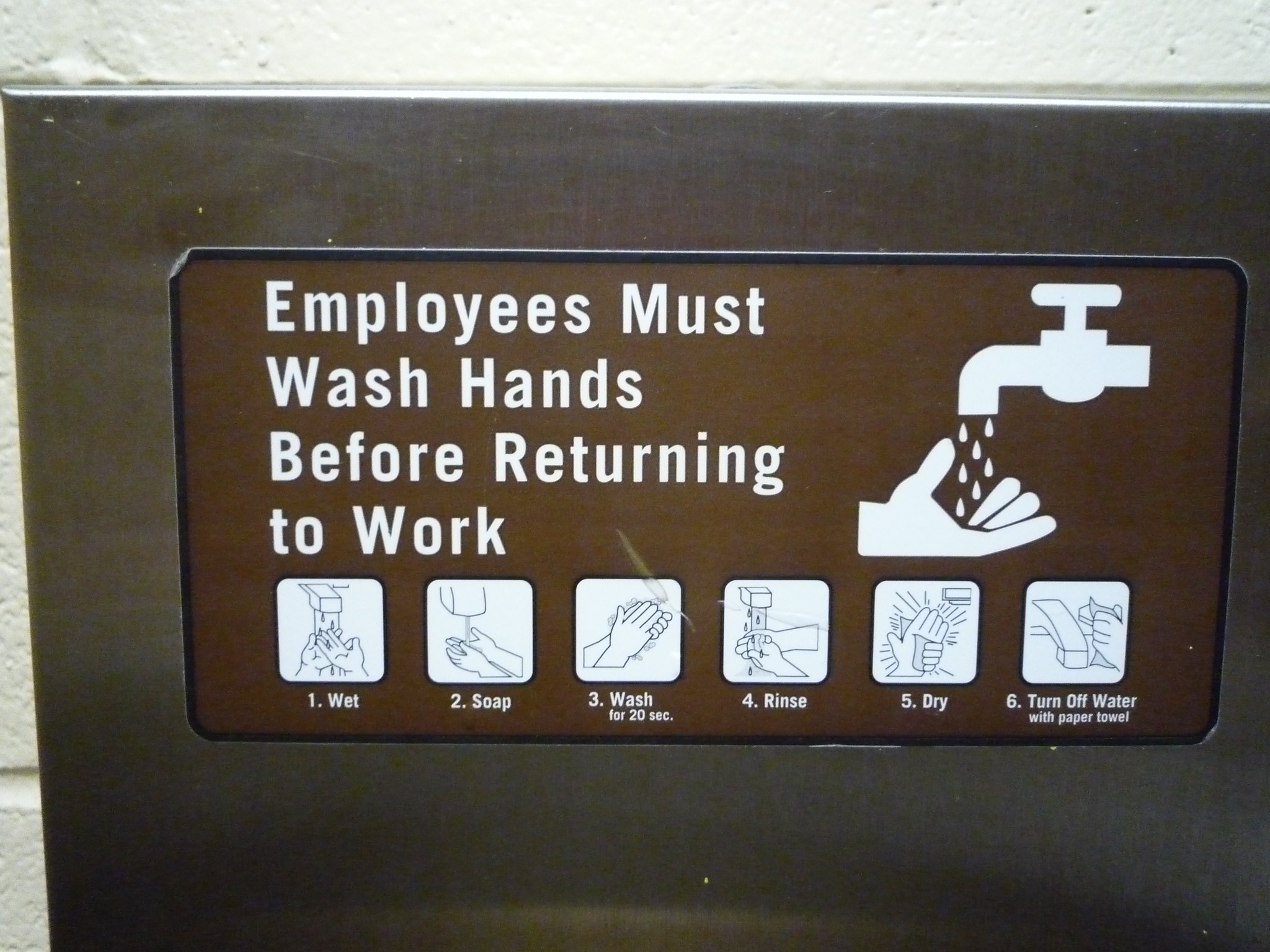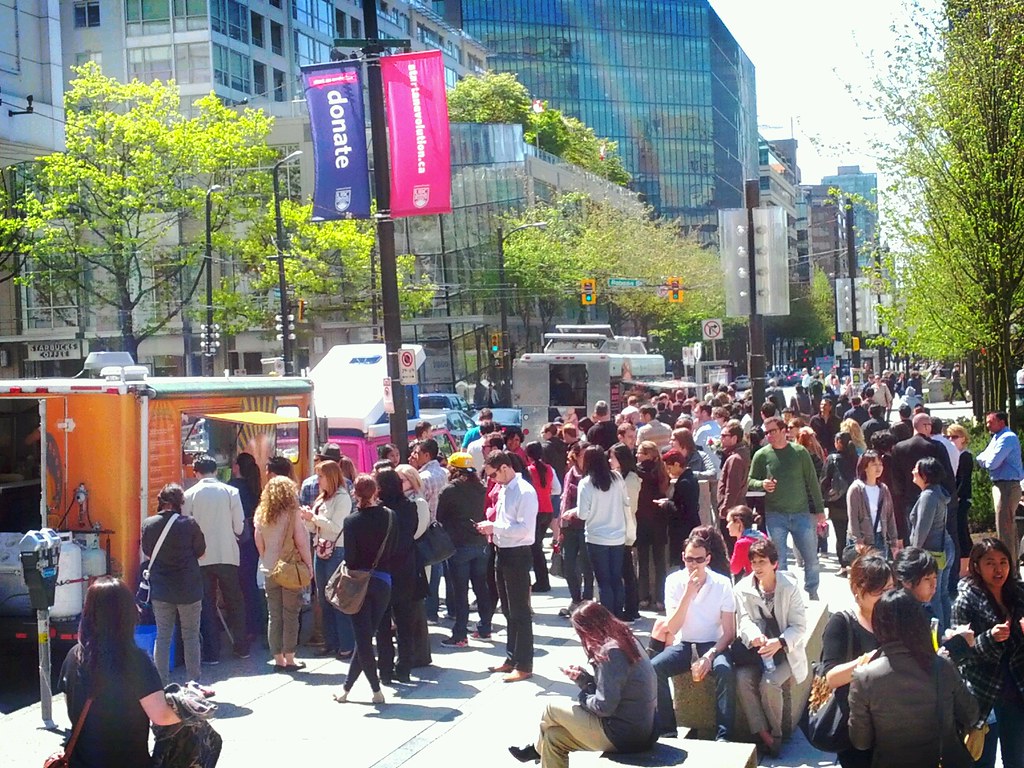23 4.5 Trends and Issues
In addition to having to focus on the changing needs of guests and the specific challenges of their own businesses, food and beverage operators must deal with trends and issues that affect the entire industry. Let’s take a closer look at these.
Industry Influencers
- Plant-based diets, healthy options
- Sustainable practices
- Evolution of home delivery
- Government influence
- Health and safety
- The power of technology
- Changing venues
Plant-Based Diets, Healthy Options
Plant-based diets are neither trend nor fad, they are viable, sustainable dietary options based on environmental practices, well being, nutrition, and personal choice.
For a combination of environmental, ethical, and health reasons plant-based foods have surged in popularity in Canada. A study by Dalhousie University found that 6.4 million Canadians are following a diet that either limits animal products intake (often termed flexitarian), or eliminates it altogether (Restaurants Canada, 2019).
The desire for plant-based foods will continue to grow driven by concern for the environment. Further proof of this is the number of quick-service restaurants now featuring plant-based products on their menus.
Sustainable Practices
In hand with plant-based diets is the continued drive to reduce our impact on the environment, through recycling, composting, donating leftover food, or water and energy conservation. In a survey of Restaurants Canada’s members, 80% said that environmental practices are important to the success of their businesses.
When incorporating environmental practices into your business, the planet is only one of the beneficiaries. When we are talking about sustainability we’re essentially talking about reducing-energy, water, waste-which also means lower operating costs and keeping dollars in your pocket.
—Janine Windsor, President Leaders in Environmentally Accountable Foodservice (Restaurants Canada 2019 Food Service Facts)
Evolution of Home Delivery
The mention of home food delivery ten years ago would have been about pizza delivery and Asian food. Arguably the hottest trend in foodservice has nothing to do with ingredients or regional cuisine. Instead, it’s the explosive growth of in-home delivery. Consumers are demanding variety and selection and delivery apps give them access to their favourite restaurants at home.
Delivery foodservice sales by digital (online and mobile apps) or traditional telephone totalled more than $4.3 billion in 2018, a staggering 44% increase over 2017 (Restaurants Canada).
While the popularity and accessibility of home delivery from your favourite restaurant has grown tremendously not all operators are enthusiastic over this growth. Many say home delivery has impacted the number of guests in their restaurants, which makes sense. The main concern lies with the profitability, with the majority believing the profit margin is slight. Regardless operators will need to figure out how to make this work and give the consumer what they want.
Examples of home delivery options:
- Skip the Dishes
- Hello Fresh
- Chef’s Plate
- makegoodfood.ca
Government Influence
Each level of government affects the sector in different ways. The federal government and its agencies have influence through income tax rates, costs of employee benefits (e.g., employer share of Canada Pension Plan and Employment Insurance deductions), and support for specific agricultural producers such as Canadian dairy and poultry farmers, which can lead to an increase in the price of ingredients such as milk, cheese, butter, eggs, and chicken compared to US prices (Findlay, 2014; Chapman, 1994).
Provincial governments also impact the food and beverage sector, in particular with respect to employment standards; minimum wage; sales taxes (except Alberta); liquor, wine, and beer wholesale pricing (Smith, 2015); and corporate income tax rates.
Municipal governments have an ever-increasing impact through property and business taxes, non-smoking bylaws, zoning and bylaw restrictions, user fees, and operating hours restrictions.
Spotlight On: Restaurants Canada
When Restaurants Canada was founded in 1944, it was known as the Canadian Restaurant Association, and later the Canadian Restaurant and Foodservices Association. Today, the organization represents over 30,000 operations including restaurants, bars, caterers, institutions, and suppliers. It conducts and circulates industry research and offers its members cost savings on supplies, insurance, and other business expenses. For more information, visit the Restaurants Canada website.
Over time, the consequence of these government impacts has resulted in independent and chain operators alike joining forces to create a national restaurant and foodservice association now named Restaurants Canada (see Spotlight On above). At the provincial level, BC operators rely on the British Columbia Restaurant & Foodservices Association (BCRFA).
Spotlight On: BC Restaurant & Foodservices Association (BCRFA)
For more than 40 years, the BCRFA has represented the interests of the province’s foodservice operators in matters such as wages, benefits, liquor licenses, and other relevant matters. Today, it offers benefits to over 3,000 members on both the supply and the operator side. For more information, visit the BC Restaurant and Foodservices Association website.
Health and Safety

Food and beverage providers hold a distinct position within our society; they invite the public to consume their offerings, both on and off premises. In doing so, all food and beverage operators must adhere to standardized public safety regulations. Each province has regulations and legislation that apply in their jurisdiction. In BC, this is addressed by the FoodSafe and Serving It Right programs, and compliance with the Occupiers Liability Act. These regulations and legislation are enacted in the interest of public health and safety.
Take a Closer Look: Health and Safety Training
Food and beverage professionals are strongly encouraged to take both FoodSafe and Serving It Right courses. These certifications are necessary to advance into specific and leadership roles in the industry. For instance, Serving It Right is required by all licensees, managers, sales staff, and servers in licensed establishments. In addition, individuals may require Serving It Right for a special occasion license. To sign up for an online program or course near you, visit FoodSafe and Serving It Right.
FoodSafe is the provincial food safety training program designed for the foodservice industry (FoodSafe, 2009). Serving It Right is a mandatory course that is completed through self-study and is required for anyone serving alcohol in a commercial setting. Its goal is to ensure that licensees, managers, and servers know their legal responsibilities and understand techniques to prevent over-service and related issues (go2HR, 2014).
In broad terms, BC’s Occupiers Liability Act covers the responsibilities of the occupier of a property to ensure the safety of visitors. Additional local health bylaws set standards of operation for health and safety under the direction of the medical officers of health. Public health inspectors regularly visit food and beverage operations to evaluate compliance. In some communities, these inspection results are posted online.
Collectively, the food and beverage industry in BC has an excellent reputation for ensuring the health and safety of its patrons, the general public, and its employees.
The Power of Technology
Technology continues to play an ever-increasing role in the sector. It is most noticeable in QSRs where many functions are automated in both the front of house and back of house. In the kitchen, temperature sensors and alarms determine when fries are ready and notify kitchen staff. Out front, remote printers or special screens ensure the kitchen is immediately notified when a server rings in a purchase. WiFi enables credit/debit card hand-held devices to be brought directly to the table to process transactions, saving steps back to the serving station.
Canadians are interacting with restaurants using their smartphones and tablets in a variety of ways. We are seeing more consumers use rewards and claim special deals and make reservations through an app or website (Restaurants Canada 2019).
- 58% are looking up directions/locations/hours of operation
- 34% used rewards/special deals
- 29% ordered items for pick-up
- 25% ordered items for delivery
- 19% made a reservation through an app/website
Other trends include automated services such as that offered by Open Table, which provides restaurants with an online real-time restaurant reservation system so customers can make reservations without speaking to anyone at the restaurant (Open Table, 2015). And now smartphone apps will tell customers what restaurants are nearby or where their favorite chain restaurant is located.
Take a Closer Look: Automated Cooking in Asia
In Singapore Changi Airport, a quick-service restaurant is using automated woks. The cook adds the ingredients and can attend to other duties until the item is ready for service. Check out a video of a cook using an automated wok. And in China, there are robots that are shaving noodles by hand.
Changing Venues
The following trends related to the changing nature of food and beverage venues, including the emerging importance of the third space, and the increased mainstream presence of non-permanent locations such as street vendors and pop-up restaurants.
The Third Space
The third space is a concept that describes locations where customers congregate that are neither home (the first space) nor work or school (the second space). Many attribute the emergence of these spaces to the popularity of coffee shops such as Starbucks. In the third space, operators must create a comfortable venue for customers to “hang out” with comfortable seating, grab and go F&B options, WiFi, and a relaxed ambience. Providing these components has been shown as a way to increase traffic and customer loyalty (Mogelonski, 2014).
Taking It to the Street
Street food has always been a component of the foodservice industry in most big cities. These operations are often run by a single owner/operator or with minimal staff and serve hot food that can be eaten while standing. According to research firm IBISWorld, in 2011 the “street food business — which includes mobile food trucks and nonmechanized carts, is a $1 billion industry that has seen an 8.4 percent growth rate from 2007 to 2012” (Entrepreneur, 2011) with 78% of owners having no more than four employees.
Recently, in North America, where climate and weather allow, there has been a noticeable increase in both the number and type of street food vendors. In the city of Vancouver alone there are over 100 permitted food cart businesses, searchable by an app and sortable list — and the city uses the terms street food vendor, food cart, and food truck interchangeably (City of Vancouver, 2014).

Pop-up restaurants have also emerged, facilitated in part by the prevalent use of social media for marketing and location identification. Pop-ups are temporary restaurants with a known expiry date, which also tend to have the following in common (Knox, 2011):
- A well-known or up-and-coming chef at the helm
- An interesting, but stationary, location (a warehouse, a park, the more unusual the better)
- Staff who are adept at promotion and word-of-mouth
- Strong local foodie (food and beverage enthusiast) population-based in the area
- Involvement from local artists or musicians to add to the experience
As popular they are with consumers, the ways in which pop-ups deviate from restaurants has aggravated some critics, causing Bon Appétit magazine to declare that “pop-ups are not supposed to be restaurants,” and that “pop-up restaurants are over” (Duckor, 2013). Statements like these are further evidence that food and beverage services trends are dynamic and ever-changing.
Representing over 30,000 food and beverage operations including restaurants, bars, caterers, institutions, and suppliers.
Representing the interests of more than 3000 of the province's foodservice operators in matters including wages, benefits, and liquor licenses, and other relevant matters.
Public areas of the establishment. In quick service, it includes the ordering and product serving area.
Food production areas not accessible to guests and not generally visible; also known as heart of house
A term used to describe F&B outlets enjoyed as "hangout" spaces for customers, where guests and service staff co-create the experience.
Temporary restaurants with a known expiry date hosted in an unusual location, which tend to be helmed by a well-known or up-and-coming chef and use word-of-mouth in their promotions.
A term (often used by the person themselves) to describe a food and beverage enthusiast.

